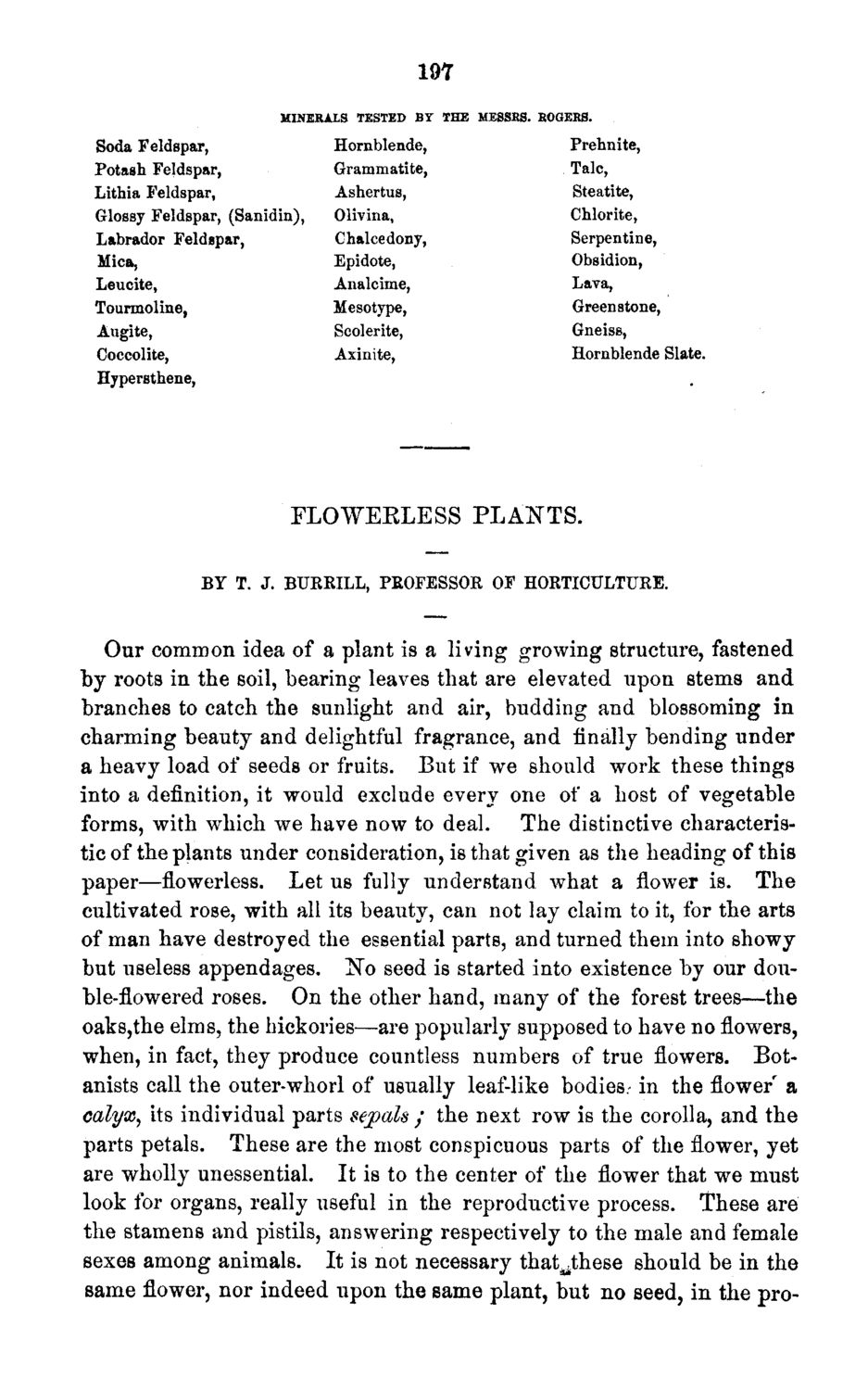| |
| |
Caption: Board of Trustees Minutes - 1871
This is a reduced-resolution page image for fast online browsing.

EXTRACTED TEXT FROM PAGE:
197 MINERALS TESTED B Y THE MESSRS. ROGERS. Soda Feldspar, Potash Feldspar, Lithia Feldspar, Glossy Feldspar, (Sanidin), Labrador Feldspar, Mica, Leucite, Tourmoline, Augite, Coccolite, Hypersthene, Hornblende, Grammatite, Ashertus, Olivina, Chalcedony, Epidote, Analcime, Mesotype, Scolerite, Axinite, Prehnite, Talc, Steatite, Chlorite, Serpentine, Obsidion, Lava, Greenstone, Gneiss, Hornblende Slate. FLOWEKLESS P L A N T S . BY T. J. BURRILL, PROFESSOR OF HORTICULTURE. Our common idea of a plant is a living growing structure, fastened by roots in the soil, bearing leaves that are elevated upon stems and branches to catch the sunlight and air, budding and blossoming in charming beauty and delightful fragrance, and finally bending under a heavy load of seeds or fruits. But if we should work these things into a definition, it would exclude every one of a host of vegetable forms, with which we have now to deal. The distinctive characteristic of the plants under consideration, is that given as the heading of this paper—flowerless. Let us fully understand what a nVwer is. The cultivated rose, with all its beauty, can not lay claim to it, for the arts of man have destroyed the essential parts, and turned them into showy but useless appendages. No seed is started into existence by our double-flowered roses. On the other hand, many of the forest trees—the oaks,the elms, the hickories—are popularly supposed to have no flowers, when, in fact, they produce countless numbers of true flowers. Botanists call the outer-whorl of usually leaf-like bodies- in the flower' a calyx, its individual parts sepals / the next row is the corolla, and the parts petals. These are the most conspicuous parts of the flower, yet are wholly unessential. It is to the center of the flower that we must look for organs, really useful in the reproductive process. These are the stamens and pistils, answering respectively to the male and female sexes among animals. It is not necessary that^these should be in the same flower, nor indeed upon the same plant, but no seed, in the pro-
| |